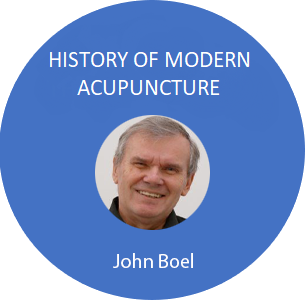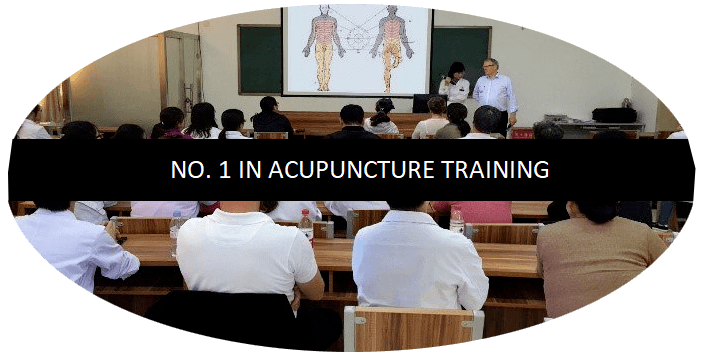AcuNova and eye acupuncture in research
A silent revolution
A new treatment method is revolutionizing healthcare.
A new treatment system was born in the late 1990s. The new science was called Acupuncture 2000, but since many mistaken it for Chinese acupuncture, the name was changed to AcuNova, which means “new acupuncture”.
Discovery
AcuNova works via the nervous system – in contrast to Chinese acupuncture, which works through so-called meridians.
Acupuncturist John Boel discovered that there are points in and around all joints that are extremely effective in treating pain, organic diseases and so-called incurable eye diseases – even in cases where medical science has given advice: “You have to learn to live with it ”.
Research
The doctor and acupuncturist Boel, as well as a handful of scientists, spent a lot of time researching the new system. As research progressed, they became aware that AcuNova contains unique potentials that have never been seen in the healthcare system to date.
Distribution
A lot has happened since then. 4,000 alternative practitioners, doctors and other medical professionals from around 50 countries have learned AcuNova.
Discussions about AcuNova were held at international conferences in China, Germany, Switzerland, Austria, Spain, Norway and Sri Lanka – where scientists from over 100 countries came together to learn together.
The participants were very enthusiastic about AcuNova and John Boel was the first in the world to be honored with the title “Acupuncturist of the Century” for his discovery.
AcuNova treats over 250,000 patients worldwide each week.
Trials with AcuNova are being performed to treat age-related macular degeneration (AMD)
Boel Acupuncture in Denmark performs up to 40 eye treatments a day.
Boel naturally wants to offer the best treatment for his patients. Therefore, in 2004 he decided to examine the AcuNova points with the best results. Over 80% of all Boel eye patients suffering from AMD (dry and wet) chose this treatment. AMD is the leading cause of clinical blindness in the western world.
The AMD patients were divided into three groups.
A closer examination showed that the diagnosis was wrong in three cases, so Boel decided to continue with the selected 27 AMD patients.
Boel also wanted to check whether two weeks of intensive treatment were better than the one previously used. Therefore, the subjects received two treatments a day for two weeks (excluding weekends), and then continuous treatments over time. The patients received a total of 30 treatments.
The 3 groups were treated with different AcuNova variants. (AcuNova 1, AcuNova 2, and AcuNova 3)
During the treatment, visual performance was checked periodically with the eye card.
After 4 weeks, the results were evaluated for 6 months.
| Procedure | Number of patients | No improvement og sight | Improvement of sight |
| AcuNova 1 | 9 | 30 % | 70 % |
| AcuNova 2 | 8 | 40 % | 60 % |
| AcuNova 3 | 10 | 20 % | 80 % |
| Total | 27 | 30 % | 70 % |
The AcuNova 3 group achieved an optical improvement between 15-40%.
The average visual acuity improvement was 27%.
The methods we used on patients in the other two groups gave poorer results.
Therefore, the method we used in the best group (AcuNova 3) was of course immediately introduced as a standard treatment for all eye patients.
In our experience, the results can be transferred to patients with other eye diseases.
Test method
Examination of visual acuity with two different test systems:
Takagi: Electronic tester
Fast eye chart
Use of visual aids – glasses or contact lenses.
The subjects were tested before the first treatment, then weekly afterwards.
Takagi has been used in patients with more than 5% visual acuity, and Schnell in patients with generally poor vision.
Daily check-up
This result was confirmed by the daily treatment in the Boel acupuncture clinics in Aulum and Copenhagen.
The clinics have treated 4,985 AMD patients in the past five years.
The same test procedure as described above was used.
83% of the 4,985 AMD patients achieved a visual improvement of at least 15%.
In the first two weeks, AMD patients received 20 treatments (two treatments per day of the week) and then two treatments per month to maintain the optical improvement.
When AcuNova was introduced in 1999, we still didn’t know how long the improvement would last.
In cases where there was a slight decrease after a few years, we treated the patients intensively for a week and were able to restore vision in most cases.
Dr. med. Hans Peter Wutta: First scientific research by Boels ’acupuncture
In Germany, a Boel student carried out scientific research on eye acupuncture and published a book about it at the Ehrenwirth Verlag: ISBN 3-431-04030-6
Excerpts from the book
Dr. Hans Peter Wutta from Kiel, acupuncture doctor. In the past four years, he has intensively dealt with the treatment of eye diseases with acupuncture (eye acupuncture).
He has also carried out studies on the effects of eye acupuncture.
Dr. Wutta treated 97 patients with AMD (calcification of the eye). There was no difference between so-called dry and wet AMD, the treatment results were identical.
The treatment was carried out with Boels’ eye acupuncture.
The patients were examined before and after treatment, and then treated statistically by the University of Hamburg. The results of this test and prolonged stagnation of the disease were the criteria used.
The results in men and women were surprisingly good, 76% benefited from the treatments.
Dr. Wutta also checked whether the age of the patients had an impact on the results and he concluded that the results were the same no matter how young or old the patient is.
There was a tendency that the treatment seemed to work a little better in women than in men, but since significantly more women participated in the study, this could have caused the difference.
It is emphasized that it is very important to strictly follow Boel’s regulations.
“Incurable” eye patients saved
Here are four examples from other eye patients.
Everyone was incurable according to medical science; Age in ():
Daniella, Austria (29): Completely blind due to excessive oxygen supply in the incubator
After a week of treatment, she could see a little for the first time. After six weeks of treatment, she no longer needed a guide dog because she could walk alone. Today she works full time.
Annika (12): Juvenile macular degeneration. 20% eyesight before treatment. 100% eyesight after one year.
Claus, Norway (13): tunnel vision (retinitis pigmentosa). Only 1% vision in the right eye, completely blind in the left eye. After one year of treatment, he achieved 50% vision in both eyes.
Claus is the first retinitis pigmentosa patient in the world whose eyes have been healed.
He became the youngest judge in Norway.
Thorgun (23): Completely blind for 10 years after a traffic accident.
About 80% vision after 9 weeks of treatment – later license.
Facts
A point can be used to transmit a signal through the nervous system to the brain. This then starts the same procedure that the body usually uses to cure diseases.
What is new is that this self-healing process can be started with AcuNova.
Or in other words: With AcuNova we treat the problem with the healing methods of nature.
AcuNova is a new science. It was not developed in the laboratory, but through practical experience.
Prof. John Boel doesn’t see himself as a scientist, but as a craftsman.


